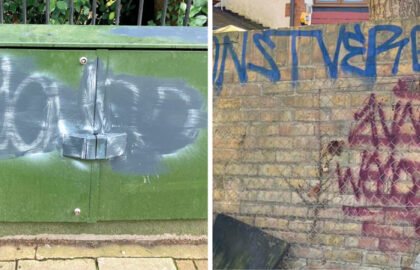Redbridge Museum will open a new permanent exhibition later this year exploring 200,000 years of local history. In the first of a series of articles, Museum Officer Nishat Alam looks at some of the items on show
“About 20 years ago at Earl Tilney’s park in Wanstead, a Roman mosaic pavement was found,” wrote Smart Lethieullier of Aldersbrook Manor House in a letter to a fellow antiquarian in 1735. He went on to suggest “that the mosaic could have been the floor of a Roman banqueting house.” So began the search for Wanstead’s Roman villa.
The Romans had first arrived on Britain’s shores in the year 55 BC, led by Julius Caesar, on the hunt for the precious metals Britain was known for. A second, more successful violent invasion began in 43 AD, and the Romans settled in pockets across the island, establishing cities like London and Colchester.
Wanstead’s proximity to the road from these cities – and the river now known as the Roding – meant it was the ideal location for a villa, a place where people lived, farmed and entertained. At the time of Lethieullier’s letter in 1735, a newer building had just been constructed on the site of the Roman villa. It was in the spectacular gardens of Wanstead House, then owned by Richard Child, Earl of Tylney, that the mosaic pavement was discovered while gardeners dug holes to plant an avenue of trees. However, the exact location is still a mystery.
From 1947, several excavations carried out by local historian Jack Elsden Tuffs and later Frank Clark of the West Essex Archaeology Group (WEAG) uncovered many objects that help us piece together what the villa may have looked like. The artefacts suggest a wealthy family once lived there. Pieces of painted wall plaster, roof tiles and the mosaic pavement mentioned in Lethieullier’s letter all point to a house built with no expense spared. Many of the materials found would have been imported from other parts of the empire, including expensive Samian pottery from Gaul (France). Tiles for a hypocaust heating system meant the villa may have had underfloor heating and possibly a bathhouse. Animal bones among the remains indicate there was a farm attached to the villa too. The villa was possibly abandoned by its owners around the year 400 when the Roman empire collapsed.
In the 1960s, Elsden Tuffs established that the mosaic pavement was located on the northwest side of the Perch Pond. In 2007 and 2008, ground penetrating radar was used to detect features indicating a possible walled structure, but the search for Wanstead’s Roman villa continues.
The artefacts shown here (on loan from the City of London) will be displayed in the new Redbridge Museum, which will also feature a digital interactive exhibit to explore the villa.
Redbridge Museum is located on Clements Road, Ilford, IG1 1EA. For more information, visit wnstd.com/museum
To complete a survey about what else should go on display, visit wnstd.com/rms




